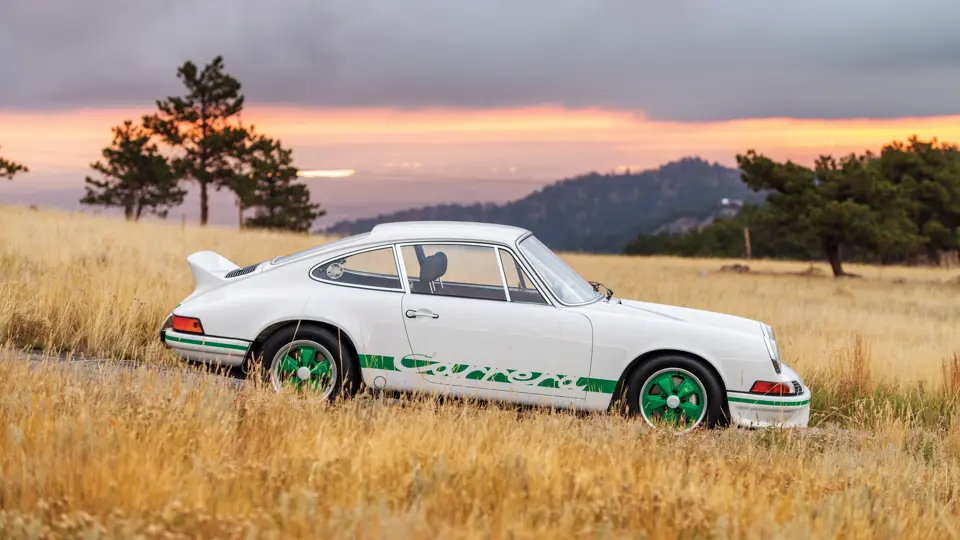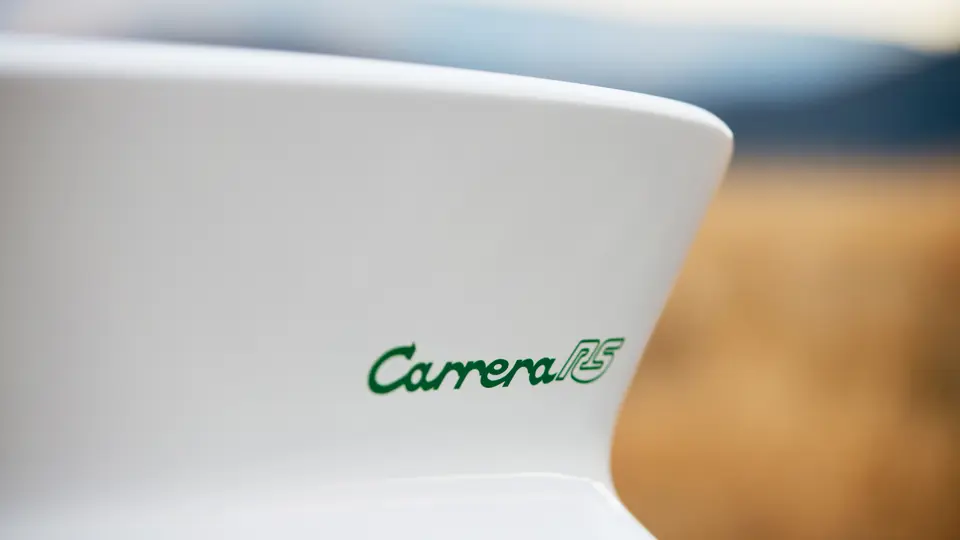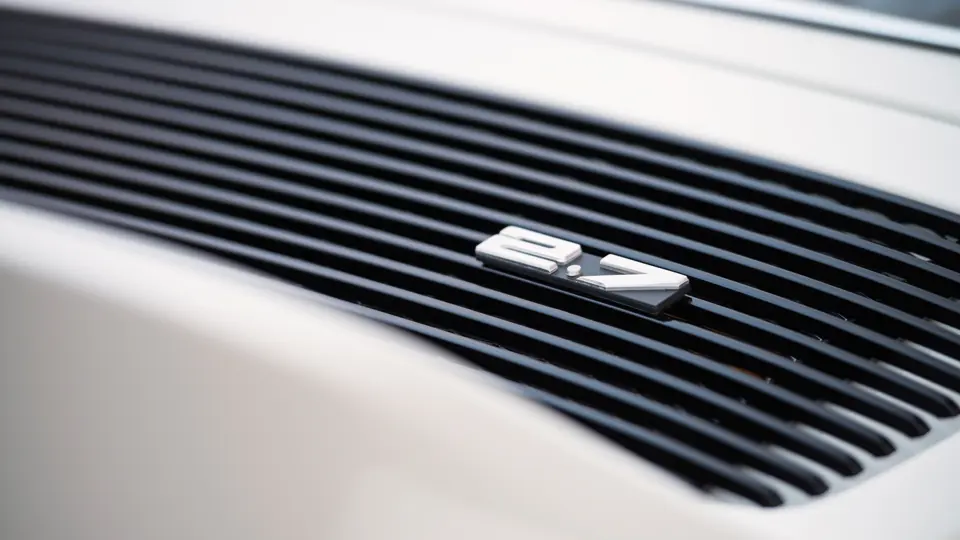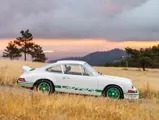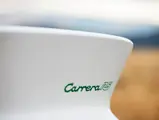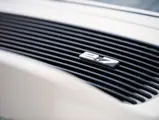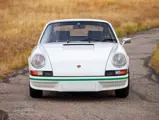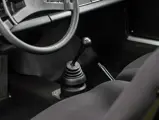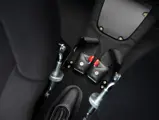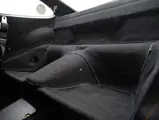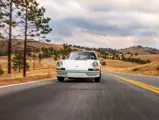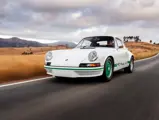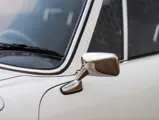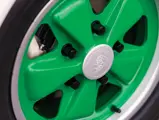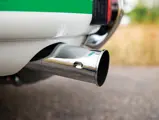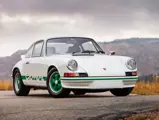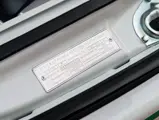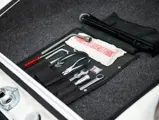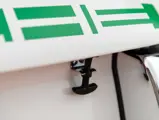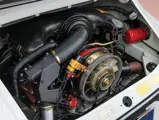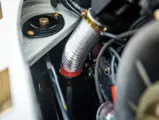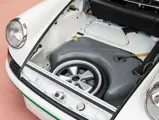
1973 Porsche 911 Carrera RS 2.7 Lightweight
{{lr.item.text}}
$1,022,500 USD | Sold
{{bidding.lot.reserveStatusFormatted}}
- One of just 200 lightweight "Sport" versions
- Original numbers-matching Silumin case engine
- Originally owned by Swiss racing driver Eugen Strähl
- Period racing history, including three times at Hockenheim
- Possibly the finest restored example in the U.S.
- 1st in Class at the 2018 Porsche Parade
- Certificate of Authenticity, copy of factory build sheet, and original Wagenpass
Here is the early 911 that every Porsche collector wants to own, a stunning third-series Carrera RS 2.7 Lightweight that has been comprehensively restored and boasts a respectable competition history. Finished in Grand Prix White with contrasting green script and color-matching Fuchs light-alloy wheels, it is the tenth-to-last ’73 RS to leave the factory. Its factory build sheet shows that it was trimmed in Black leatherette, and ordered with the M471 Lightweight, or “Sports” package, and optional M220 limited-slip differential.
Delivered to Porsche’s Frankfurt dealer, Glöckler, on 10 July 1973, it was immediately pressed into service as a Group 3 racing car by its first owner, Swiss gentleman driver Eugen Strähl, who would finish 10th overall and 1st in class at the 1975 24 Hours of Le Mans in an RS and later enjoy a long career racing a Sauber-BMW. According to the race entries recorded in this car’s original Wagenpass, Strähl competed in 10 events in 1974, including three separate appearances at Hockenheim. It was during this period that the original gearbox succumbed to the rigors of competition and was replaced by a correct factory un-numbered unit.
Its second owner, Mr. Brunner, held onto the car for nearly 20 years before passing it on to noted German Porsche collector Stefan Jaeger. Stefan also raced the car over his four-year ownership. At that point, Porsche broker Marco Marinello arranged the sale to Claudio Roddaro, currently the owner of the only road-licensed Porsche 917 in the world, a machine he drives on the streets near his home in Monaco. Eventually, Mr. Roddaro sold this RS to art dealer, connoisseur, and general raconteur Kenny Schachter of London. Always a lover of a pretty shape, Mr. Schachter parked the car in his office so he could admire it every day. The current owner purchased the car from Mr. Schachter in 2013.
After enjoying the car for a short period, the decision was made to restore it to factory-new condition, a task that occupied Sean McKay of Golden, Colorado, a Porsche Parade multiple Best of Show winner, for the next three years. The car was fully disassembled, and a front-mounted RSR oil cooler, external battery shut-offs, and other racing paraphernalia were removed. After the original undercoating pattern was documented, the bare tub was media blasted, and the shell was found to be corrosion-free. The only piece of sheet metal replaced was the front latch panel, where the RSR oil cooler resided. A list had been made of the 37 places that the factory had masked off before the undercoating Schutz had applied when new. The paint and undercoating work was done by one of the most experienced 356 and muscle car painters in the Rocky Mountain Region, Mike Slaughter of Epic Restorations, also a multiple Porsche Parade Best of Show winner.
The consignor states that all the glass is original to the car, save for the windshield, which was replaced with a new Sigla piece. The interior was redone using an Autos International RS Lightweight kit. The Lightweight-only seat frames were repainted in correct semi-gloss black and new foam and upholstery installed by another award-winning shop, Auto Weave Upholstery, in Arvada, Colorado. Correct fabric-backed rubber floormat material was sourced in Europe. An NOS clock-delete plug was sourced to replace the one in the car that had been drilled for a switch. All gauges were sent to North Hollywood Speedometer for restoration. Interior and exterior chromed parts, including the bumper horns, outside mirror, door handles, and rear quarter window latches, were all re-plated to concours standards.
The engine was rebuilt by Jerry Woods Enterprises of Campbell, California, using the original Silumin case – one of perhaps a dozen of that type installed at the factory – and a new piston/ring set and rebuilt heads. The fuel injection pump was overhauled by San Francisco’s Pacific Fuel Injection, while the throttle bodies were rebuilt by Burnham Performance of Camarillo, California.
The factory-correct magnesium-cased 915 five-speed transaxle was treated to a full rebuild by Chris Pohlod of Simple Auto Solutions of Boulder, Colorado. The case received an anti-corrosion treatment by Gary Arentz, of San Andreas, California, who has carried out this treatment on 906 and 908 engine cases for the Porsche Factory. All hardware was yellow zinc plated before assembly. Underneath, new Bilstein shock absorbers and strut inserts were installed. The stock “S” brake calipers were sent to PMB Performance in Sandy, Utah, for rebuilding and re-plating. New rotors were fitted and all-new brake lines were installed. The four Fuchs rims were sent to Wiedman’s Wheels in Oroville, California, for re-finishing to the correct Porsche green hue.
Finally, with all components in hand, Sean McKay carefully reassembled and properly adjusted everything to factory specifications. The owner notes that “after almost three years, the restored car is as perfect as it could be, built under the dictum, ‘There is only one correct.’” Painstaking effort has gone into restoring every detail of this car, so that it presents today just as an RS Lightweight would have left the factory in 1973. Having been driven only short distances since restoration, the current odometer reading is 90,860 km, or 56,458 miles, which is believed to be original.
Upon completion of the restoration, it was promptly entered by its Denver-area owner in the Full 911 Restoration class at the 63rd Porsche Parade at Lake of the Ozarks, Missouri, in July 2018. There it won a Best in Class trophy, scoring a near-perfect 299.4 of 300 possible points and secured a coveted Gmünd Award. It is supplied with a correct, late-’73 tool kit, with the hard-to-find double-ended screwdriver, and a bag with snaps. A correctly date-coded fan belt is part of the tool kit, as is a spare fuse kit. The 911 T, E, S owner’s manual comes with the RS Supplement, and a copy of the authoritative Carrera RS (first edition) by Konradsheim will be provided along with the later version by the same author, book S/N 1580. Books of original pictures of Mr. Strähl racing the car in 1974 for the LiSta Team – when he was sponsored by the German office supply house – are also included with the documentation. Most importantly, there is a Certificate of Authenticity and copy of the factory build sheet, which ties the production stamping on the dashboard to the car’s chassis number.
Only 1,580 Carrera RS 2.7s were constructed in three series, and of that group, just 200 were “Sports,” or lightweight versions. Rare, fast, and beautiful, this astonishingly correct late-production example is certainly one of the best in the world.





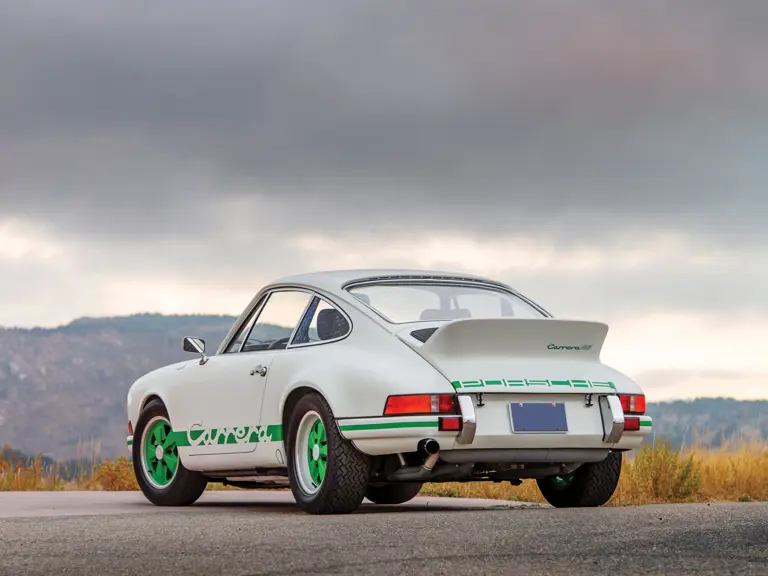
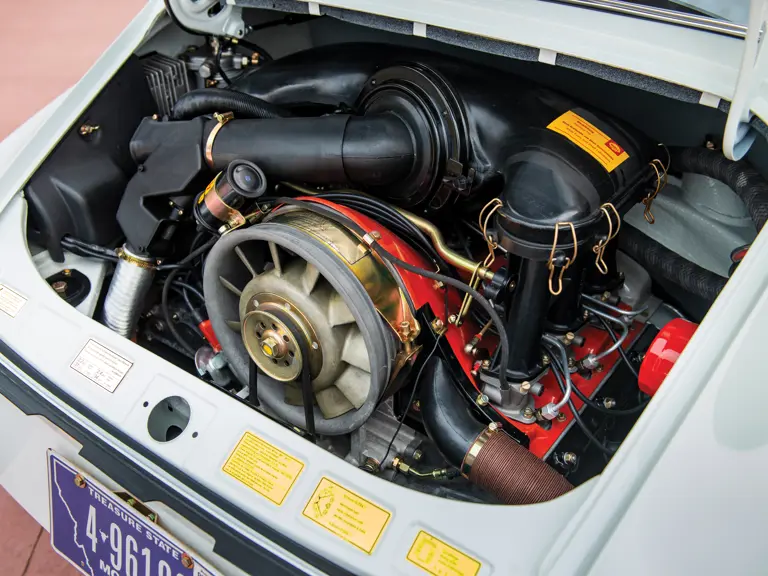
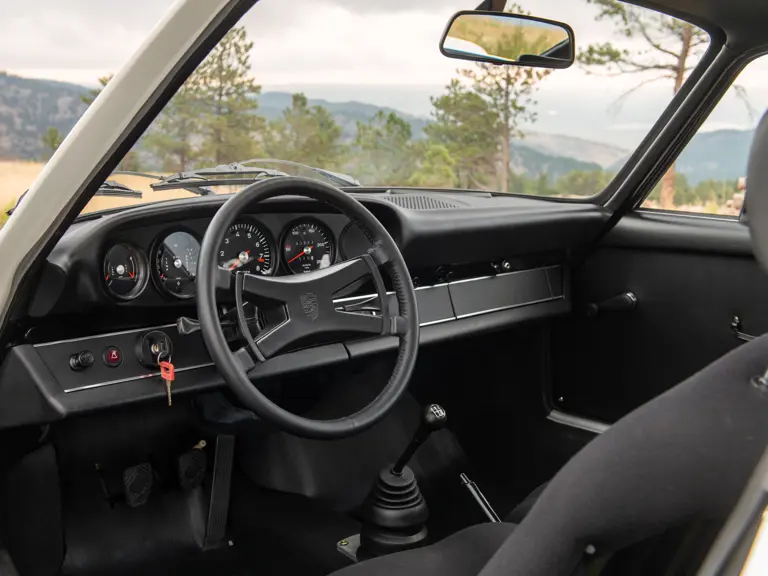
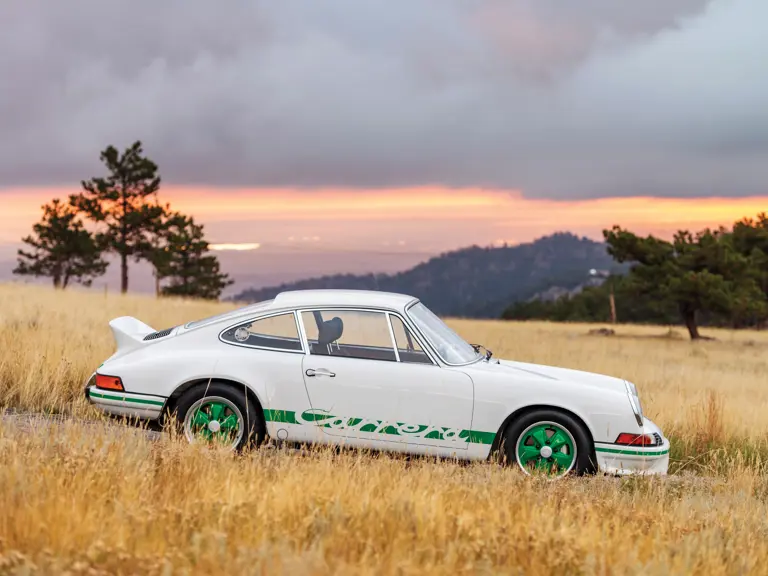

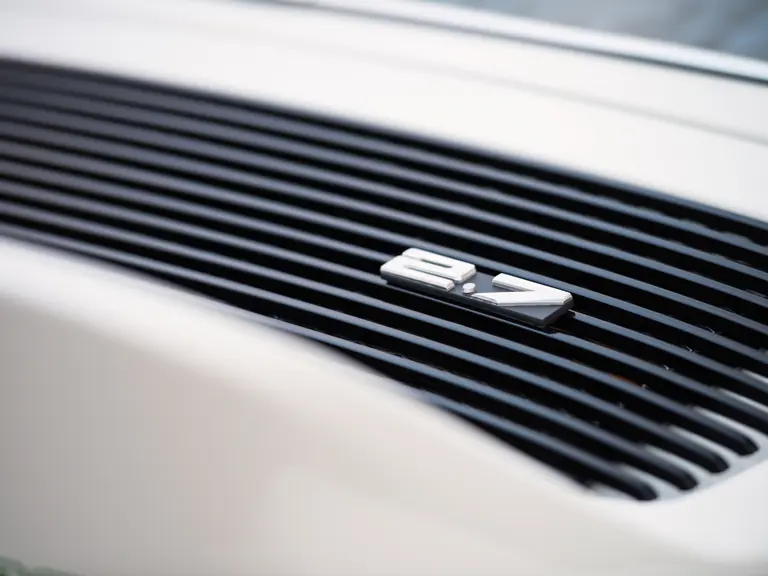
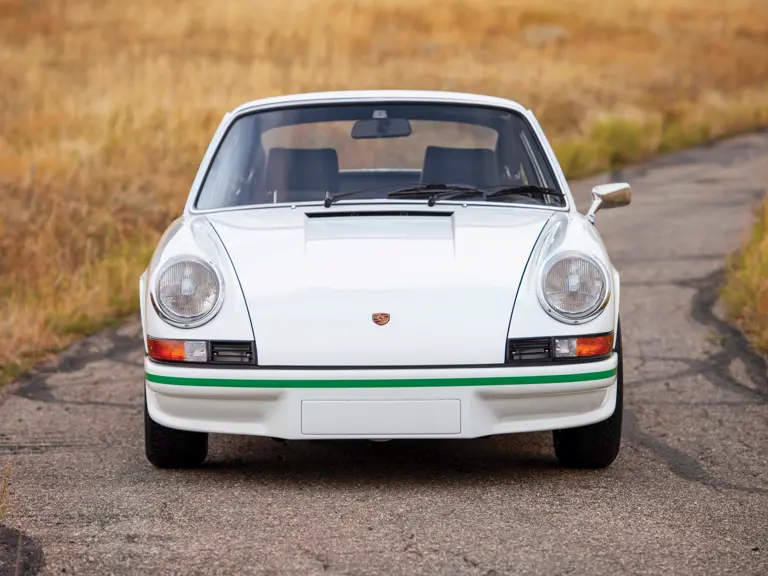
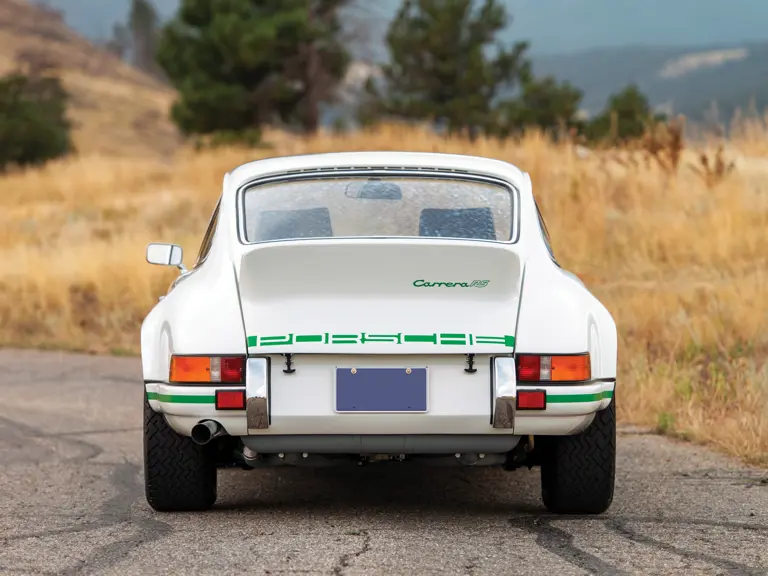
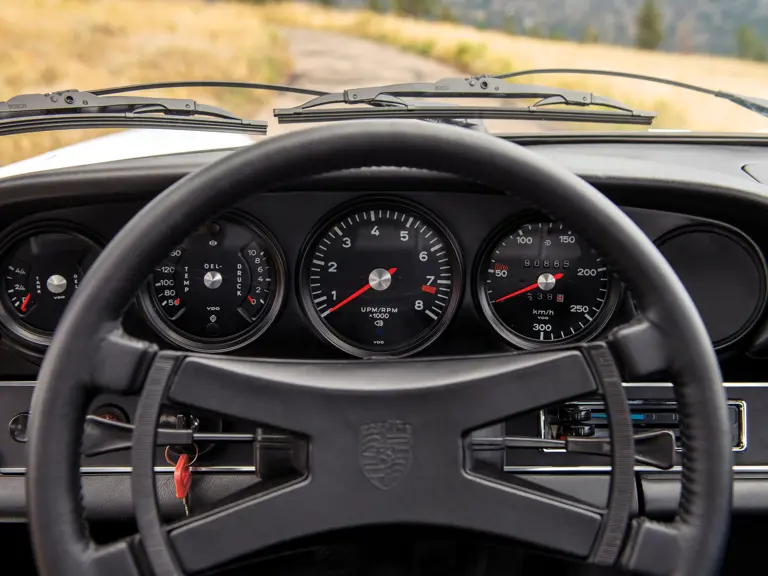
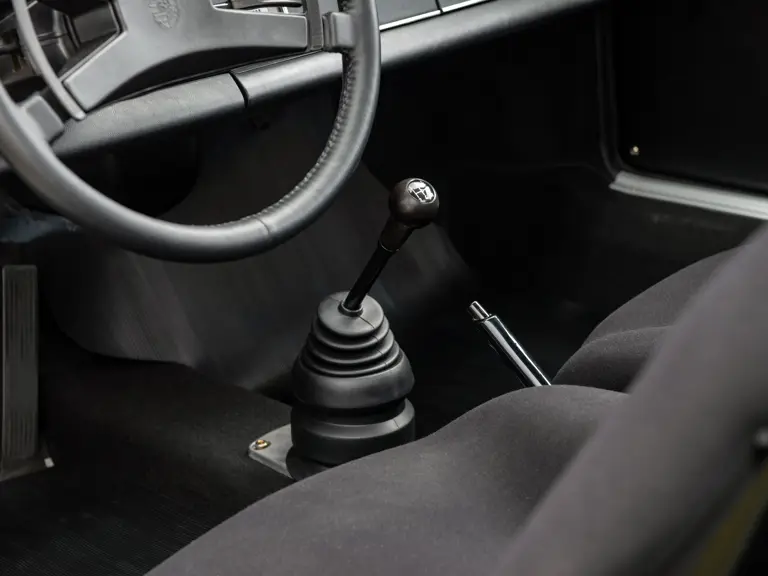
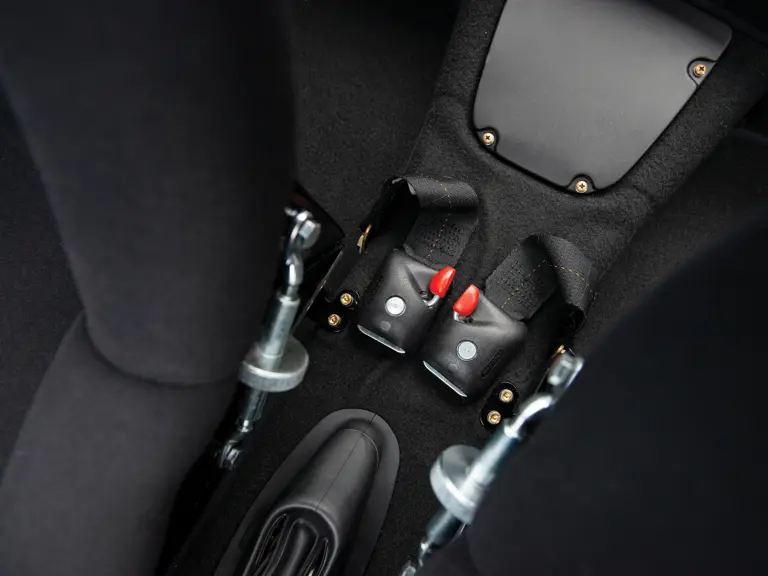
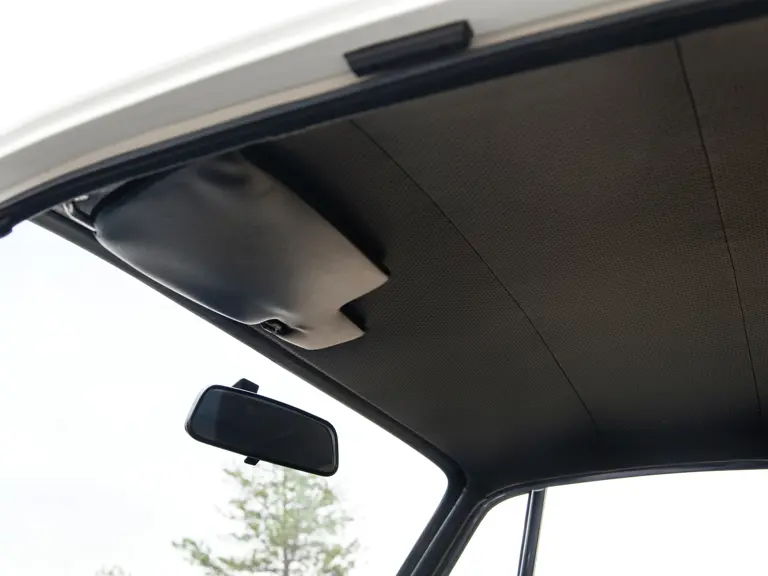
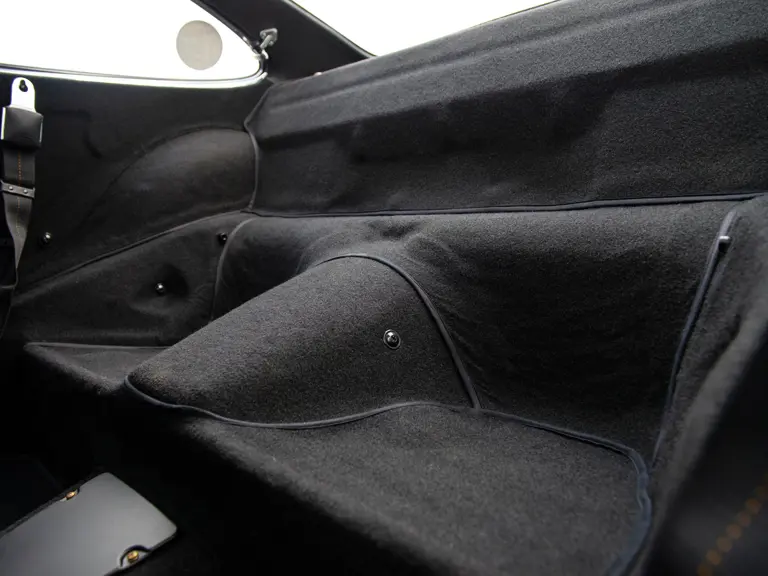
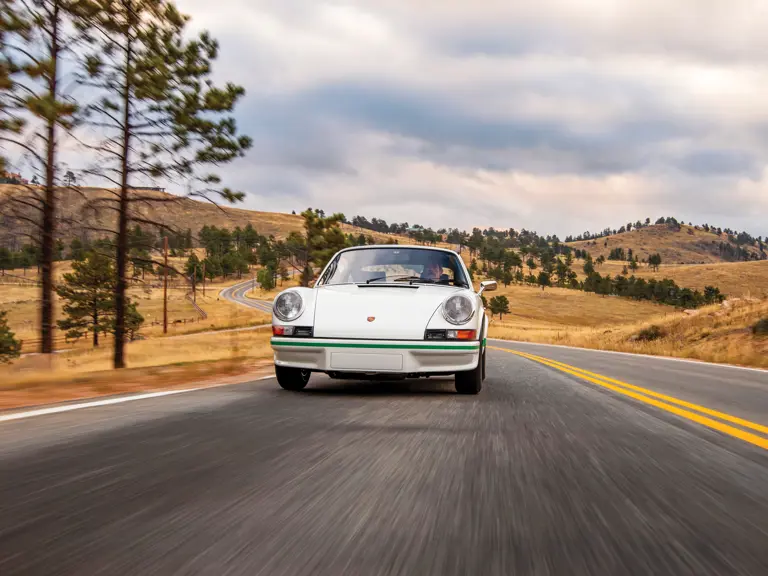
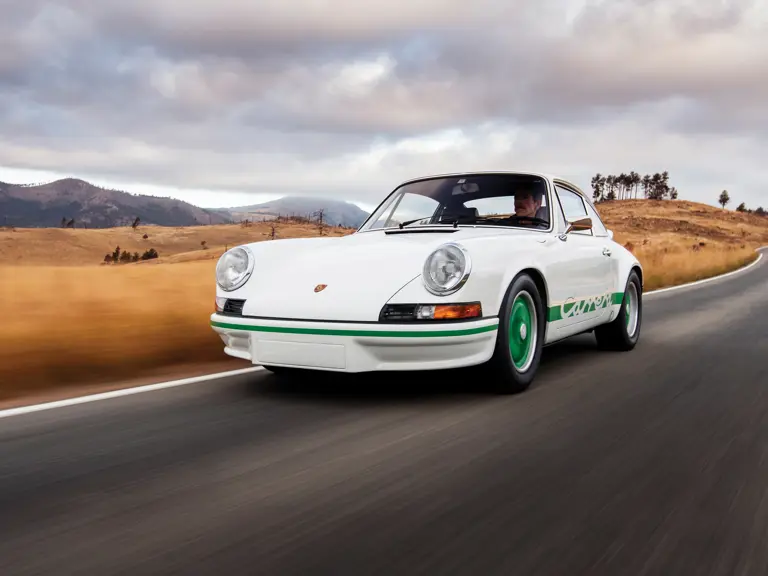
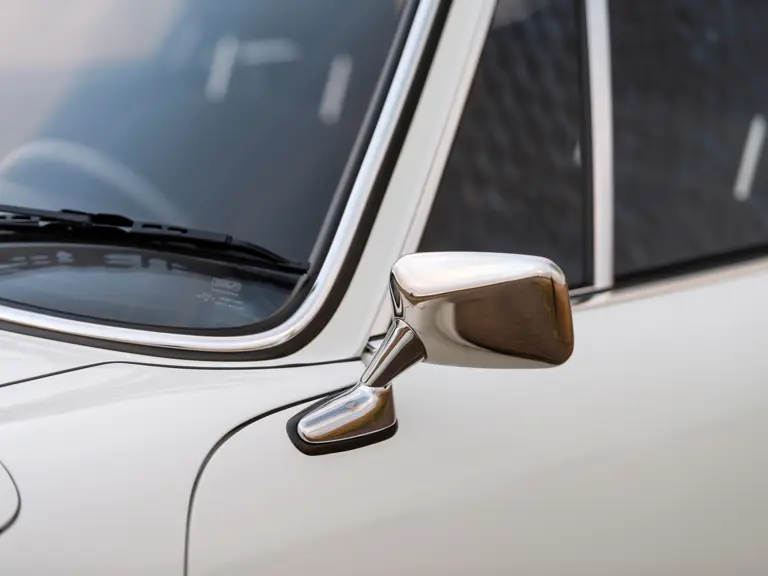
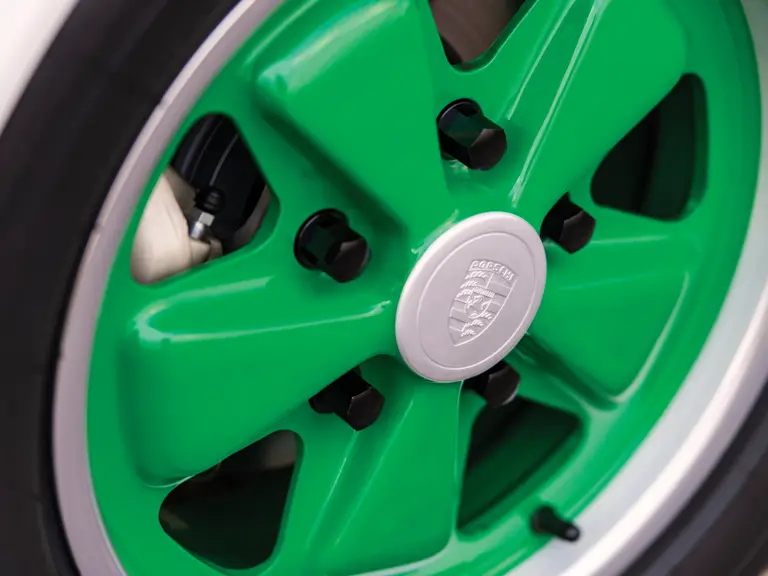
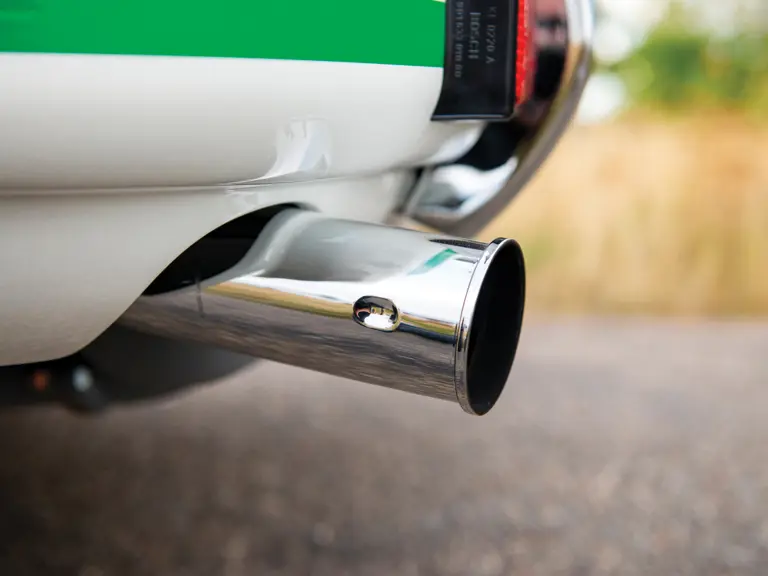
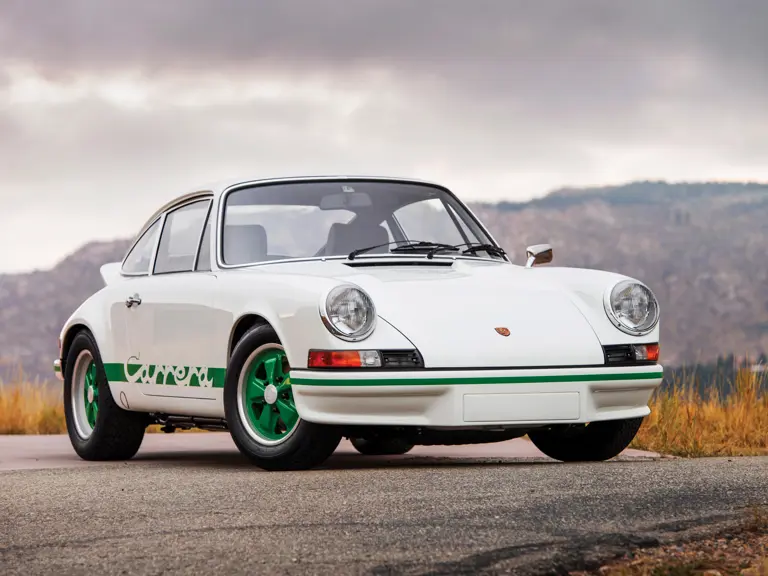
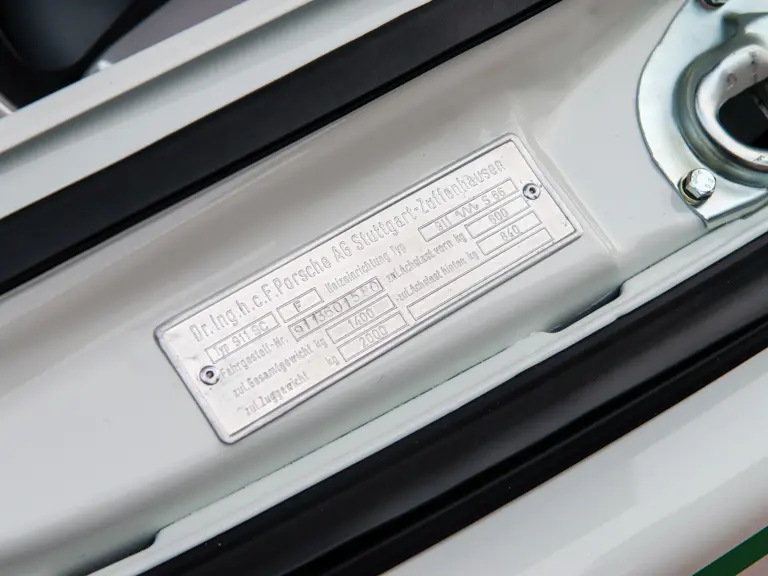

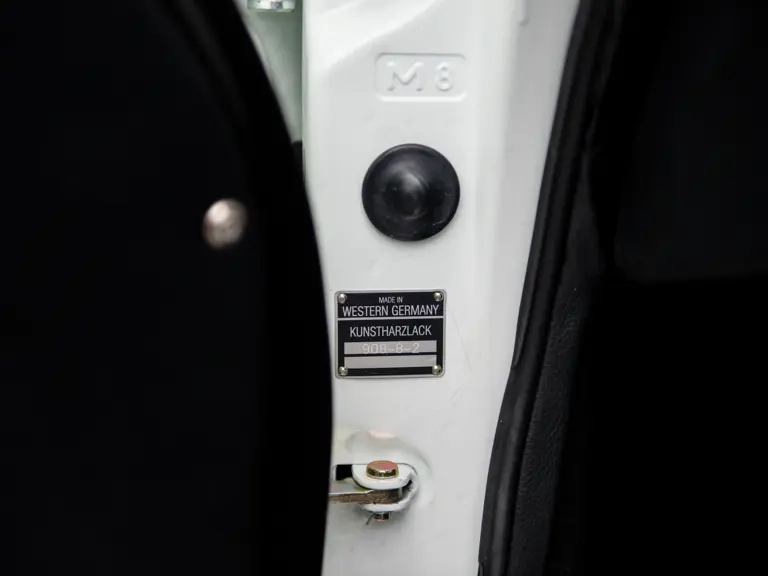
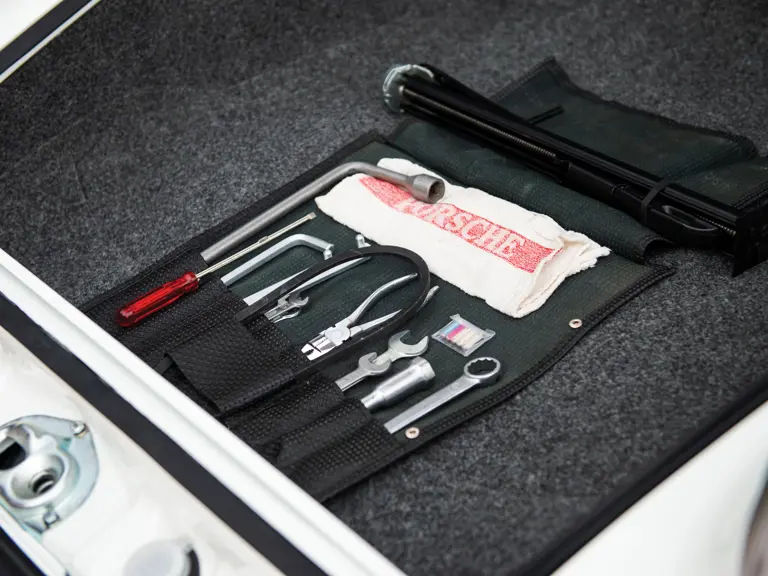

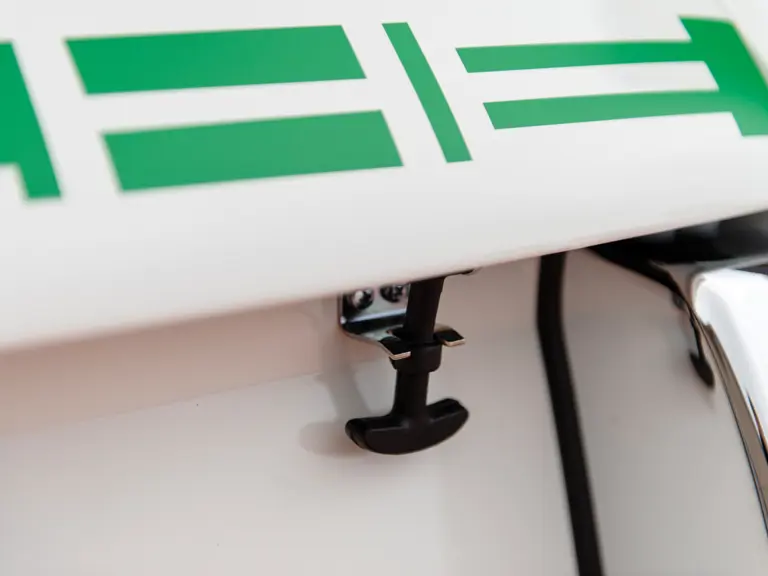


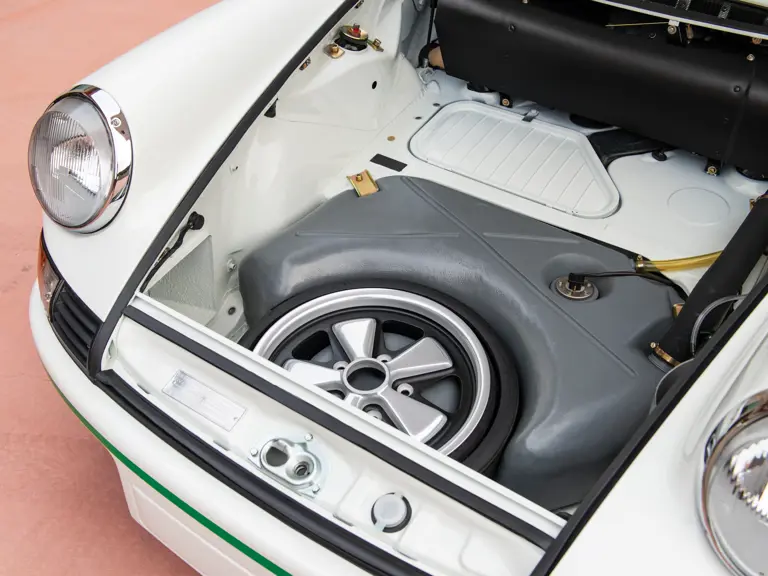
 | Atlanta, Georgia
| Atlanta, Georgia
